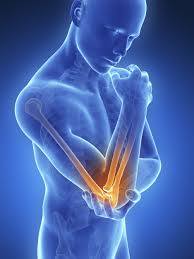Today I want to talk to you about a common injury we see here at Watsonia Physiotherapy called extensor tendinopathy, which is more commonly known as ‘tennis elbow”.
Now in most cases we see this injury in athletes and manual workers, however, this highly restrictive injury can strike anyone. Pain can appear suddenly due to heavy lifting or unscrewing a tight lid, or more commonly, 24-72 hours following an unaccustomed activity which requires repetitive use of the muscles that control the wrists, hands or fingers, especially when gripping is involved.
Tennis elbow can really restrict your movement, causing you a lot of pain which can affect your daily functioning. If you leave this injury untreated, hoping that it will just go away, it may become recurrent and/or worsen.
Getting it treated properly can get you back to full function, pain free to enjoy your everyday life the way you should.
So what causes tennis elbow?
Tennis elbow generally occurs as a result of wear and tear to the tendon of one of the forearm muscles, leading to inflammation and pain on the outside of the forearm just below the elbow joint. You don’t have to play tennis to experience tennis elbow. Everyday tasks like those listed below can also result in pain:
• A weekend of laying bricks or painting
• Prolonged use of a screwdriver
• Extended periods of knitting or sewing
• Poor technique in sport (i.e. incorrect push-ups, poor yoga technique or a poor tennis backhand)
So what are my treatment options?
Due to the large number of factors that can contribute to this injury, no one treatment has proven totally effective in resolving this condition. As such a combination of different therapies and treatment strategies are likely to be required for us to not only eliminate your pain, but prevent it from returning.
It is likely that an initial period of rest, the application of ice, and using anti-inflammatory medication will assist in reducing inflammation and relieving your pain. This will likely be followed by a combination of treatments including:
• Massage therapy
• Trigger point release
• Stretching exercises
• Motor Control & Strengthening exercises
• Correction of predisposing biomechanical factors
Once your injury has settled it is important to return to activity using a graduated program. This will usually take place over 3-6 weeks depending on the severity of the injury and the duration of rehabilitation.
If you, or someone you know are suffering from elbow pain, or want to learn about how to prevent its onset, please call our clinic for an appointment.

